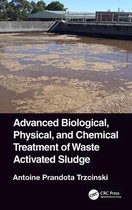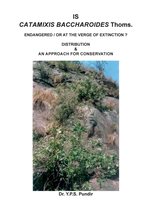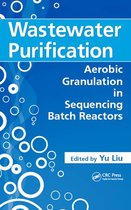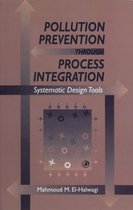Activated Sludge Ebook Tooltip Ebooks kunnen worden gelezen op uw computer en op daarvoor geschikte e-readers. Developments and Sustainable Solutions
Afbeeldingen
Sla de afbeeldingen overArtikel vergelijken
- Engels
- E-book
- 9781800613898
- 27 februari 2023
- Adobe ePub
Productbeschrijving
Activated sludge is the most widely used biological wastewater treatment process globally to date, although its high energy demand makes it a major contributor of greenhouse gas emissions. Over recent decades it has been constantly modified and retrofitted to treat ever higher loads or improve effluent standards which have often resulted in even greater carbon emissions. Conventional activated sludge treatment is at a crossroads where new sustainable solutions are required if we are to protect the quality of our rivers and meet net-zero carbon targets.
The book details current operation and design with special emphasis on the biological aspects of the process. From the microbial kinetics to the fascinating process of floc formation and development, the book explores the development of our understanding of the process looking at new sustainable designs, including biological nutrient removal and new aeration systems. Sludge separation problems and control options are explained, with a trouble-shooting guide to non-bulking problems. Environmental issues including noise, odor, aerosols, micro-plastics and nanoparticles are all reviewed, as is pathogen removal and the problem of antibiotic resistant genes and bacteria. The development of membrane bioreactors has increased process reliability and effluent quality, while integrated fixed-film activated sludge processes are more efficient and compact. The book concludes by exploring how activated sludge can become more sustainable, for example, by carbon harvesting and byproduct recovery.
This interdisciplinary book is essential reading for both engineers and scientists whether training at university or practitioners and consultants in the wastewater industry.
Related Link(s)
Contents:
- Introduction
- Microbial Theory and Kinetics
- Flocculation
- Process Control
- Factors Affecting Performance
- Aeration Systems
- Conventional Activated Sludge Processes
- Extended Aeration
- High-rate Activated Sludge Processes
- The Membrane Bioreactor Process
- Ecological Basis of Operation
- Bacteria
- Fungi
- Protozoa
- Rotifera and Other Metazoan
- Nutrient Removal
- Sludge Separation Problems
- Controlling Bulking Problems
- Trouble-shooting: Non-bulking Problems
- Environmental Problems and Pathogen Removal
- Activated Sludge and Sustainability
Readership: Environmental engineers and scientists at all levels who wish to find out more about biological wastewater treatment and activated sludge processes, how they work and are operated.
Key Features:
- Conventional activated sludge is a energy-intensive wastewater treatment process which often suffers from periods of poor performance due to sludge separation problems
- It is constantly being modified and retrofitted in order to treat ever higher loads or improve effluent standards which often result in even greater carbon emissions
- Also, the number of treatment plants reporting failures when raw or partially treated sewage is discharged into surface waters has never been so high
- So conventional treatment of activated sludge is at a crossroads where new sustainable solutions are required if we are to protect the quality of our rivers, estuaries and seas and meet expected net-zero carbon targets
- The book offers an in-depth study on the process of activated sludge, including its development, both in terms of design and operation
- The book emphasizes the key role of the microbial community in process operation from floc formation and development to sludge separation problems, from the biological removal of nitrogen and phosphorus to carbon harvesting and byproduct recovery
- The book investigates the key environmental issues of odour control, noise dissemination and mitigation, aerosol formation and their role in pathogen transfer, the problem of wastewater treatment plants being point sources of microplastics, and the detrimental effects of nanoparticles on operation and their environmental impact
- The need to move to sustainable options in wastewater treatment and the importance of the circular economy is a challenge for major urban conurbations reliant on the activated sludge process with a continuous evolution of innovative options
- The book provides a complete reference to activated sludge design and operation, as well as giving those new to the system an advanced overview. It offers solutions and new perspectives on what is possible and guides the reader to the key research sources that have shaped the process we know today
Productspecificaties
Inhoud
- Taal
- en
- Bindwijze
- E-book
- Oorspronkelijke releasedatum
- 27 februari 2023
- Ebook Formaat
- Adobe ePub
Betrokkenen
- Hoofdauteur
- Nicholas F Gray
- Hoofduitgeverij
- WSPC (Europe)
Lees mogelijkheden
- Lees dit ebook op
- Desktop (Mac en Windows) | Kobo e-reader | Android (smartphone en tablet) | iOS (smartphone en tablet) | Windows (smartphone en tablet)
Overige kenmerken
- Studieboek
- Nee
EAN
- EAN
- 9781800613898
Je vindt dit artikel in
- Categorieën
-
Kies gewenste uitvoering
Prijsinformatie en bestellen
De prijs van dit product is 119 euro. De meest getoonde prijs is 129 euro. Je bespaart 8%.- E-book is direct beschikbaar na aankoop
- E-books lezen is voordelig
- Dag en nacht klantenservice
- Veilig betalen
Rapporteer dit artikel
Je wilt melding doen van illegale inhoud over dit artikel:
- Ik wil melding doen als klant
- Ik wil melding doen als autoriteit of trusted flagger
- Ik wil melding doen als partner
- Ik wil melding doen als merkhouder
Geen klant, autoriteit, trusted flagger, merkhouder of partner? Gebruik dan onderstaande link om melding te doen.








